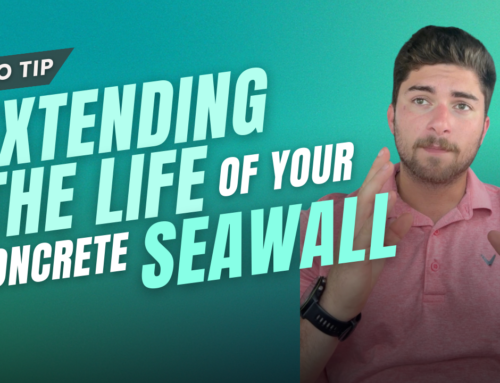There are tons of things to consider when preparing to build a dock, but among the most important is what type of material you decide to use. That choice mainly comes down to either timber docks or concrete docks. Each has its own list of pros and cons to weigh out, but it ultimately depends on your own personal preference.
Here are the major differences between concrete and timber docks:
Timber Docks
Timber docks have been around forever and for good reason. On the one hand, they’re cheaper than concrete by around twenty-five to thirty percent, making them the go-to affordable option. They can also last a good while when treated properly, with the life expectancy of wood piles falling around twenty-five years and the framing lasting an average of about fifteen years. However, the decking tends to be around seven to ten years because it is generally not pressure-treated as often. As far as treatment goes, pilings are rated at 2.5 CCA, the framing is 0.6 CCA, and the decking is 0.4 CCA, which is why they require replacement more often due to sun exposure and lack of resistance to salt water.
Another advantage of using timber docks is that you can use composite, PVC, and HDPE decking. These come in different colors, have a longer life expectancy, and require no sanding, no staining, and very little maintenance whatsoever. They are also easy to repair in the event of a tropical storm, so long as the pilings remain intact. Many people also enjoy their aesthetic.
Something to be noted about timber docks is to make sure piling caps are tight and secure in order to avoid the center of the piles from rotting out. Stagnant water can also lead to increased bacteria eating away at the wood, such as dead-end canals, in which case concrete docks may be more suitable.
Concrete Docks
Those who choose to build with concrete will be rewarded with their durability. They are incredibly strong, capable of mounting virtually any kind of boat lift you want, and can withstand most storms with little effort. Concrete docks can also last considerably longer than timber; between fifty and seventy years if done correctly. Many people like the clean and simple aesthetic of a concrete dock, too.
That being said, their durability comes with a trade-off. They are twenty to thirty percent more costly to build. On top of that, they are susceptible to human error, and the main reason concrete docks fail is due to spalling—spalling happens because there’s rebar in the concrete and over time, small amounts of seawater can permeate through the concrete and eat away at the rebar. This can be prevented by ensuring that there are at least 3 inches of concrete separating the outermost rebar and the outside of the piling.
Occasionally a contractor will make the mistake of having the rebar only an inch or so from the outside elements, which allows the salt water to seep through and deteriorate the rebar by causing it to rust and oxidize, also causing the rebar to expand and crack the concrete around it.
What’s more, without a proper cushion when driving the pilings, hairline cracks can form. Concrete docks also can’t be used as rub rails unless fenders are installed, whereas timber can be parked up against without damaging boats. Like timber piling, concrete also needs caps to avoid exposing rebar to the elements, as well as a reliable epoxy or tar to seal off the rebar before applying the caps. And as durable as concrete docks are, if they happen to get damaged in a storm, they can’t be fixed and require everything to basically be redone.
Which is Best?
When it comes down to it, one type of dock isn’t necessarily better than the other. What matters is how you intend to use it, the longevity, and your personal preferences. Some people choose to do a mixture dock, using concrete pilings and timber decking, but this essentially requires you to drill into the pilings in order to install a weaker deck after paying the higher amount for concrete pilings in the first place, which can lead to cracking in the future.
Getting Started
Whichever type of dock you decide to build, you’ll need an experienced group of professionals that are familiar with the area before you get started. At Rapid Permits and Engineering, we’re happy to help with any and all permit services, project designs, and marine engineering needs that you may have.
Just give us a call at 365-916-1400 or shoot us an email at info@rapidpermitting.com to learn more today and get your project started!





